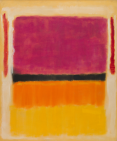Abstract
The idea of an essential connection between the quality of a song and the sincerity of the emotion it expresses ("I sing because I love") is a topos used in various ways by troubadours, one which lent itself naturally to discussion of their relationship to audiences and to other poets. The topos transferred across to the thirteenth-century biographies (vidas) found alongside the songs in numerous manuscripts, as in the arresting claim, made in the vida about Daude de Pradas, that his songs "did not spring from love and therefore did not find favour with audiences." Elsewhere, however, the biographies give a different account of inauthenticity, as the edge which allows troubadours to exercise control over their social environment; significantly, this version of the topos appears in the vida for Uc de Saint Circ, who is believed to be the main author of the corpus. In these contrasting accounts of poetic inauthenticity, we can see the biographies wrestling with questions of control and definition of the cultural capital of troubadour lyric: patron and poet, cleric and lay. The thirteenth century saw authors and their audiences increasingly asserting the lasting cultural value of vernacular literature in general, and (through its association with troubadour production) Occitan in particular. Accordingly, these texts reflect the poets' engagement with the court audiences for whom they were writing, at the same time as they look ahead to the enduring record of posterity.
Except where otherwise noted, the content of this site is licensed under a Creative Commons Attribution-ShareAlike 4.0 International (CC BY-SA 4.0).
Authors retain copyright of their work. The CC BY-SA 4.0 licence allows readers to copy and redistribute the material in any medium or format, and to remix, transform, and build upon the material for any purpose, even commercially, as long as the original author is credited and as long as any works that are derived from the original are distributed under the same terms.

